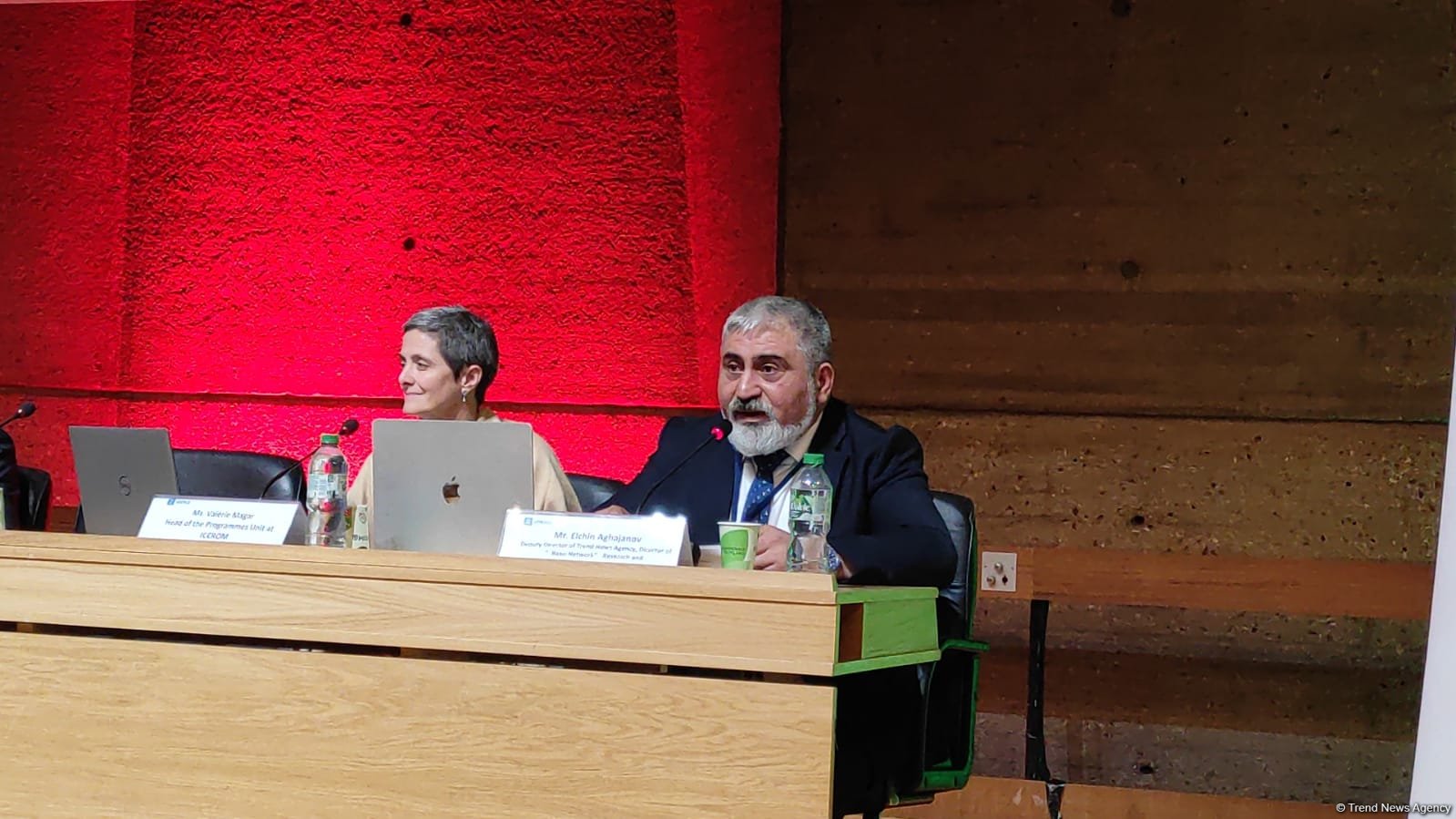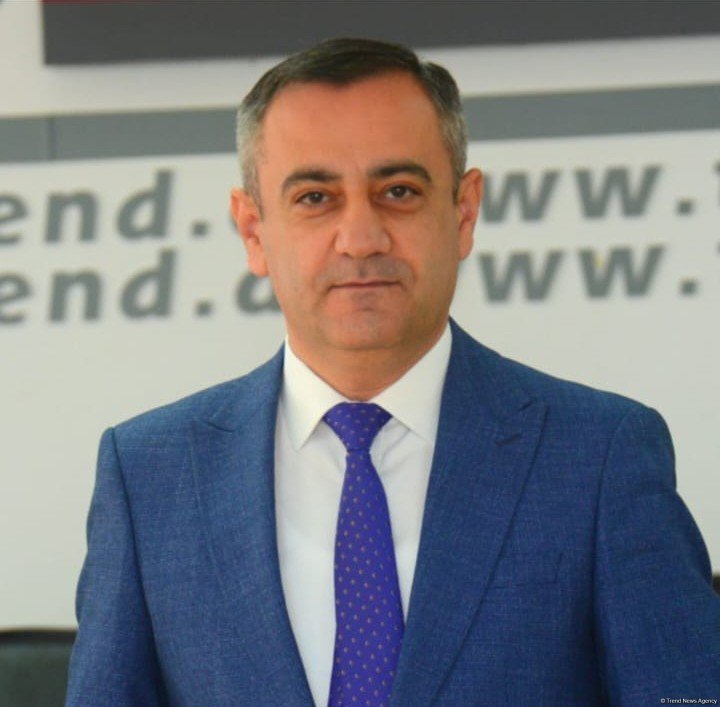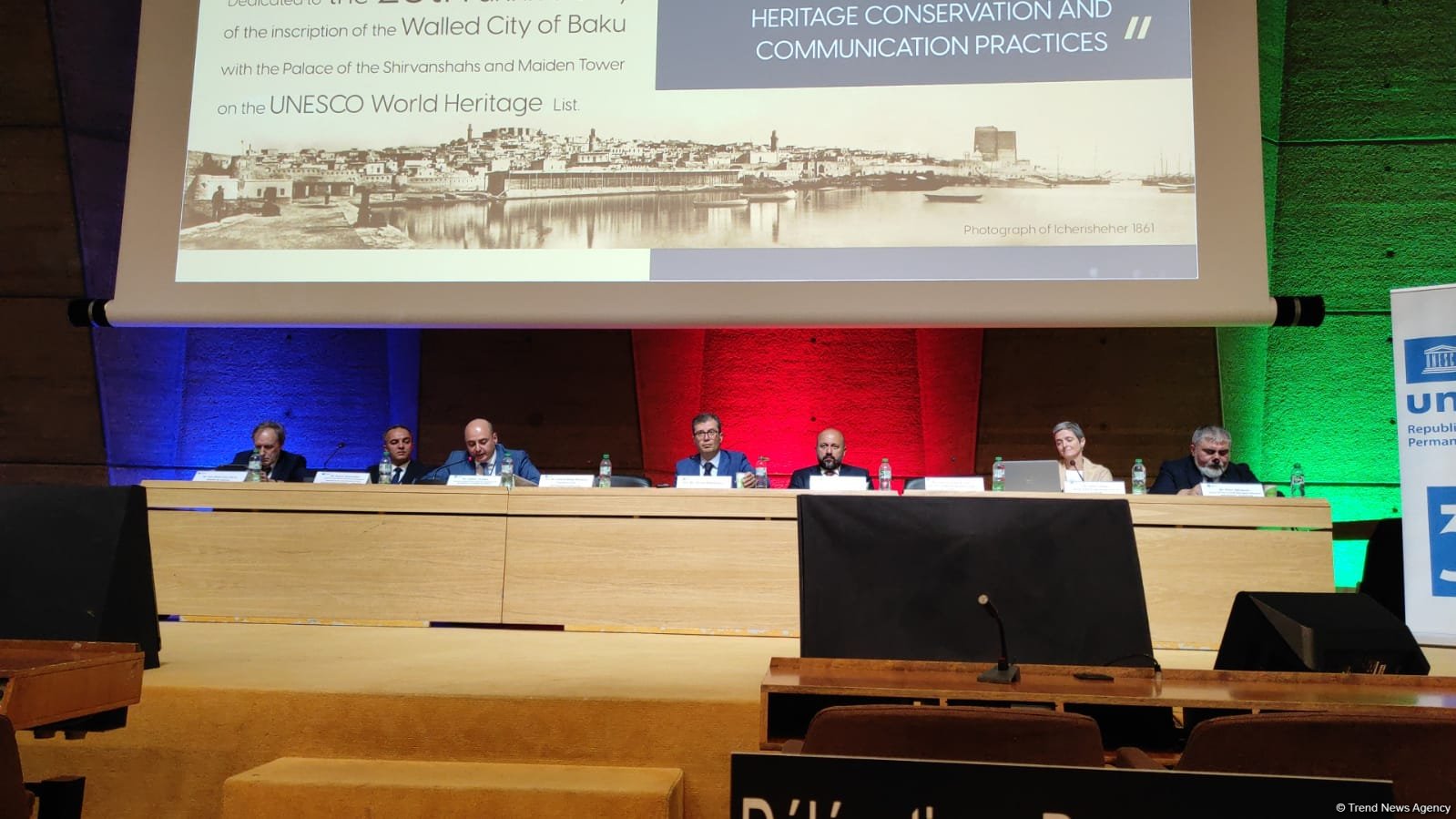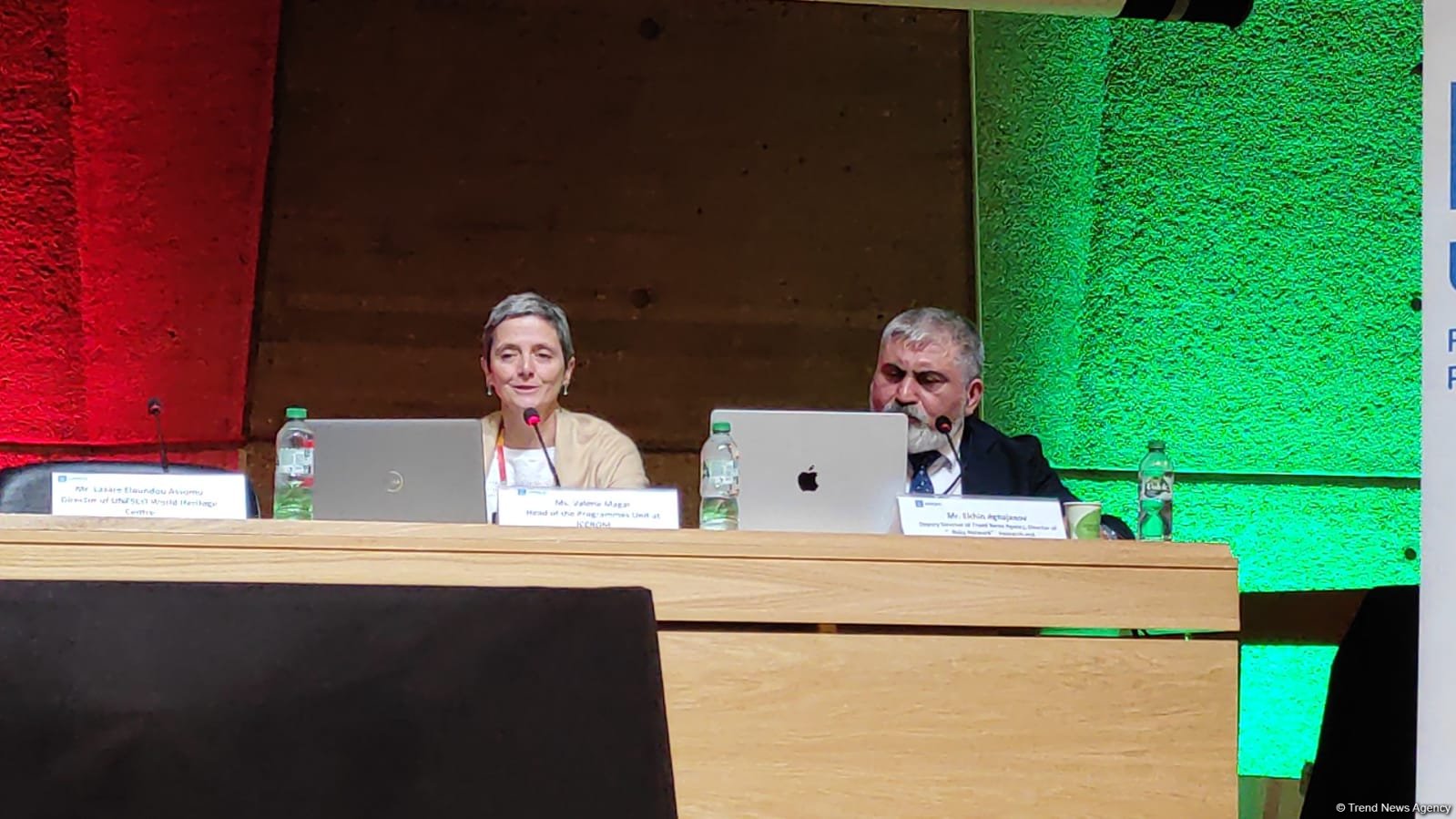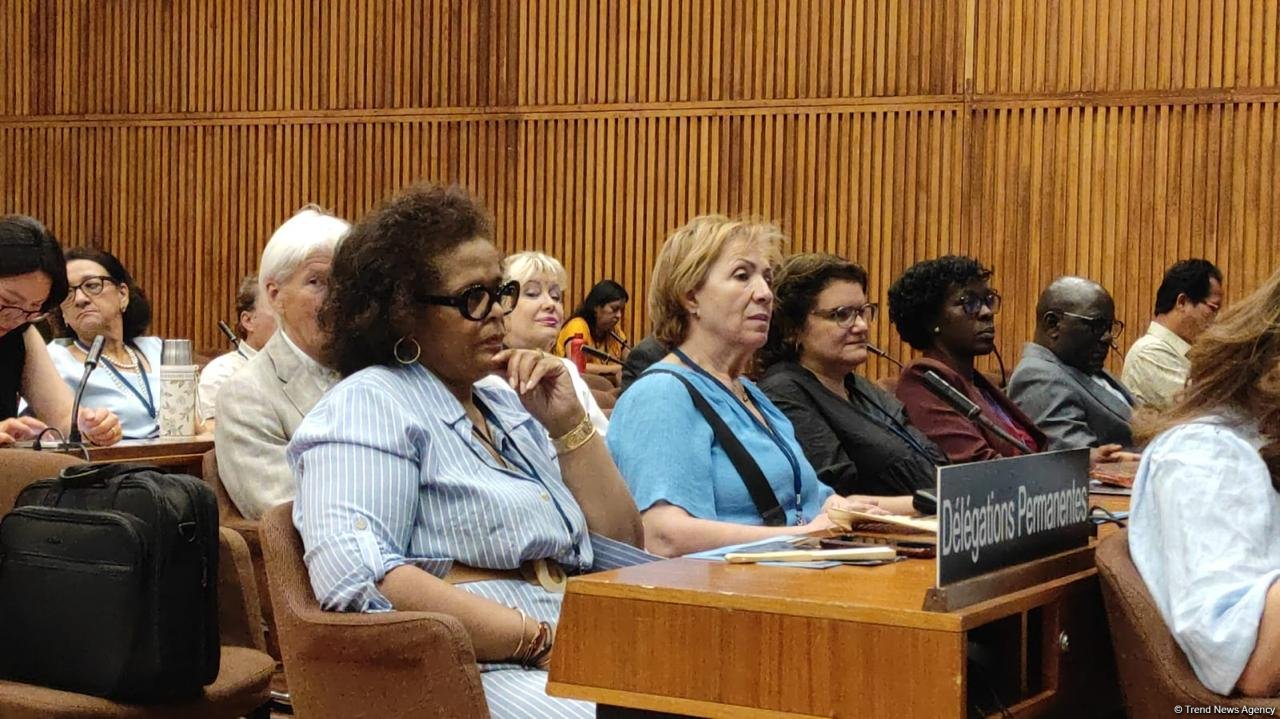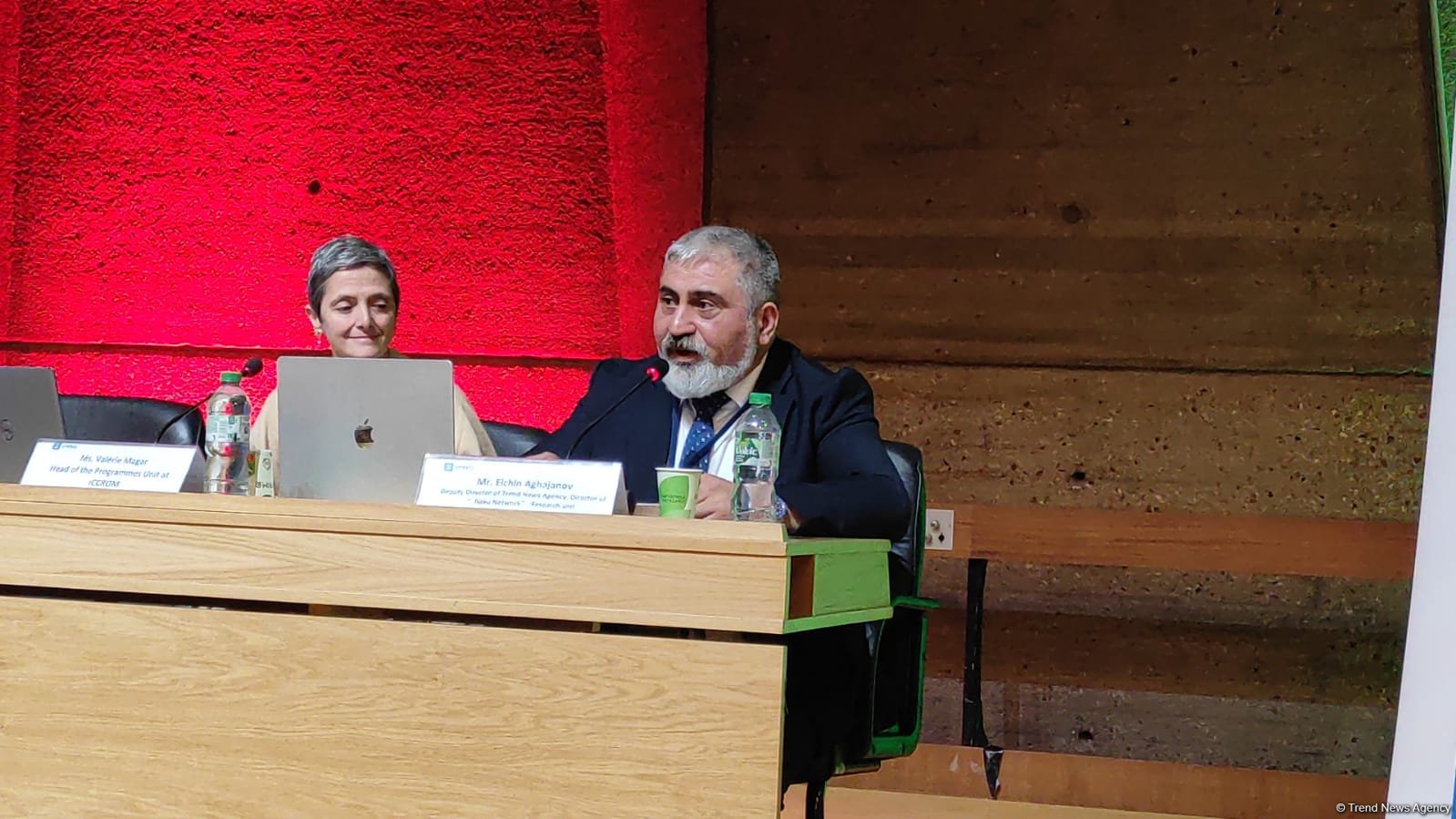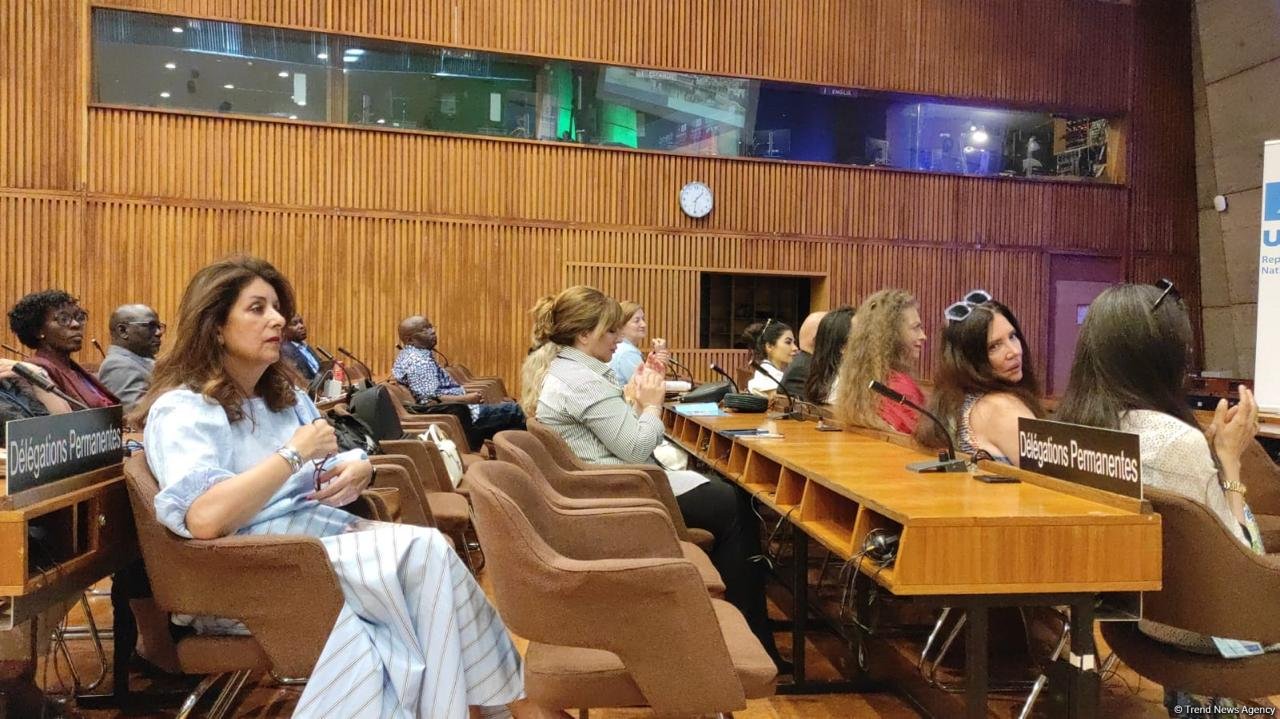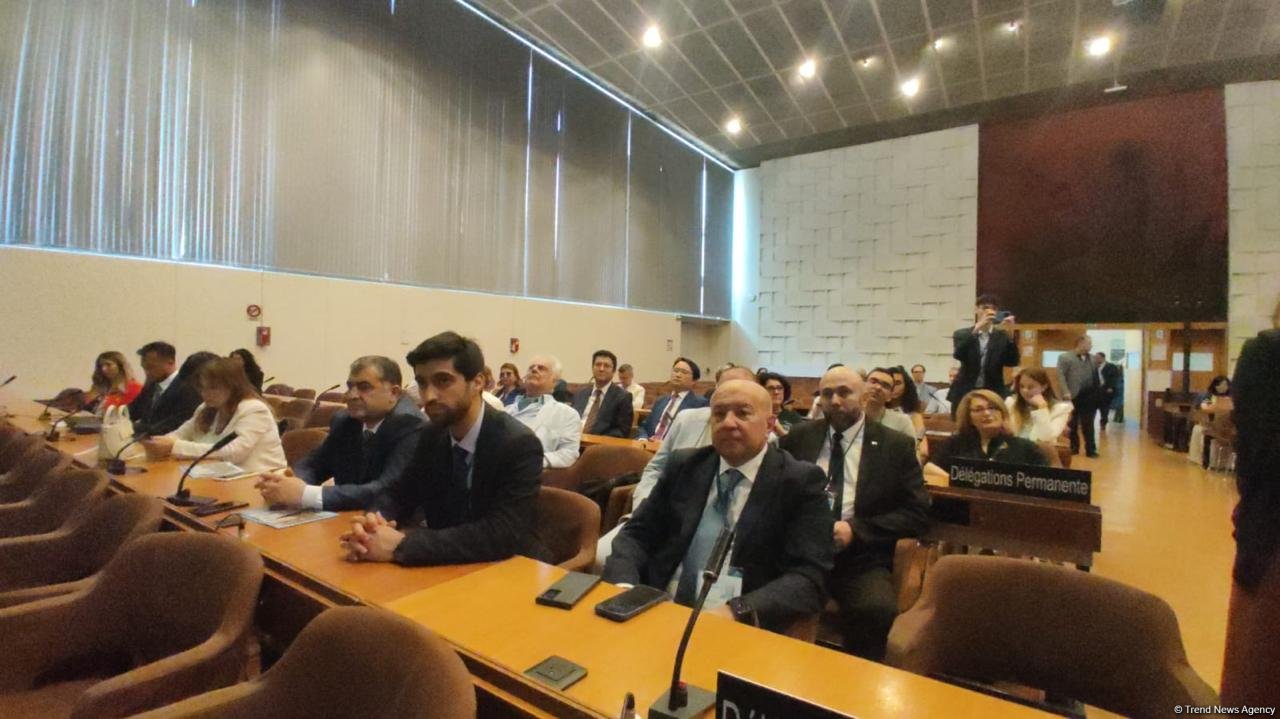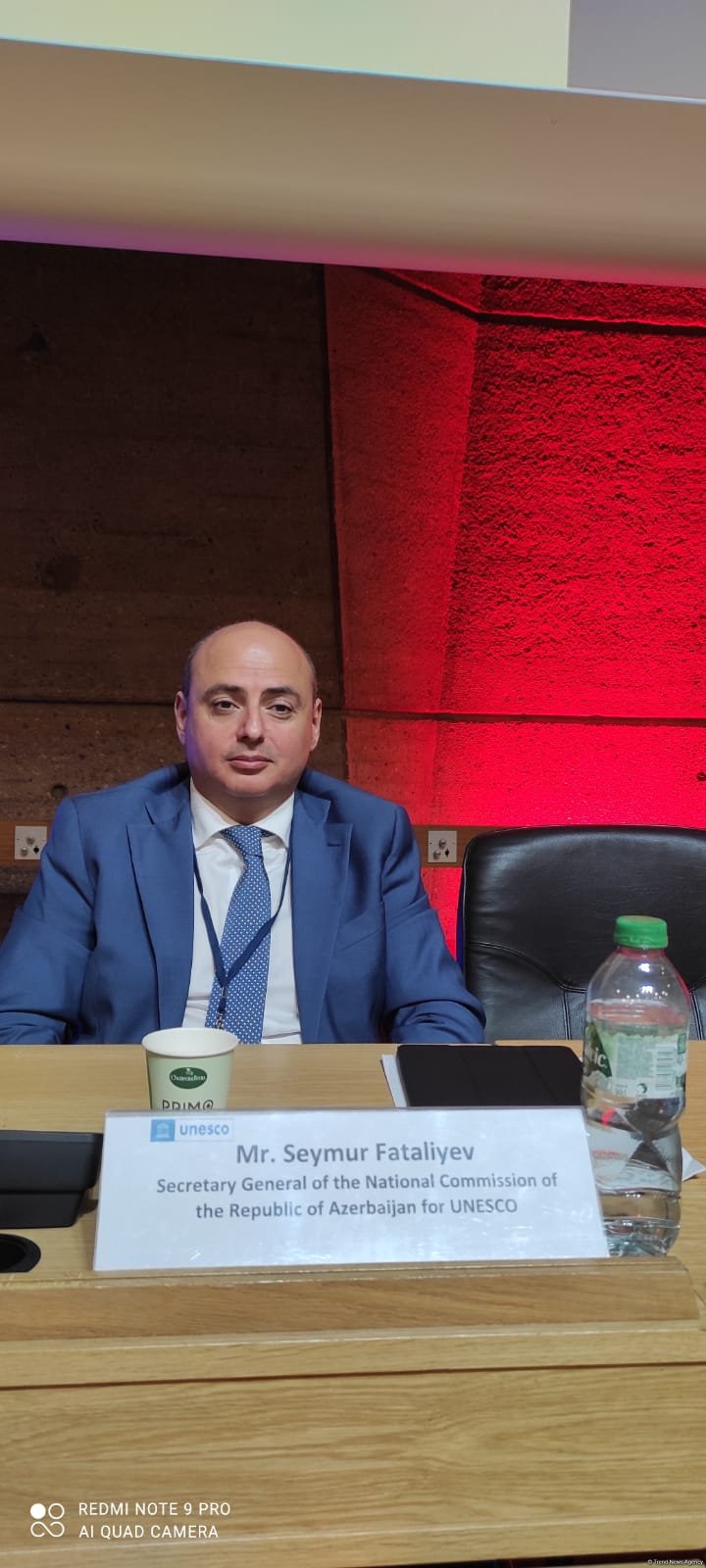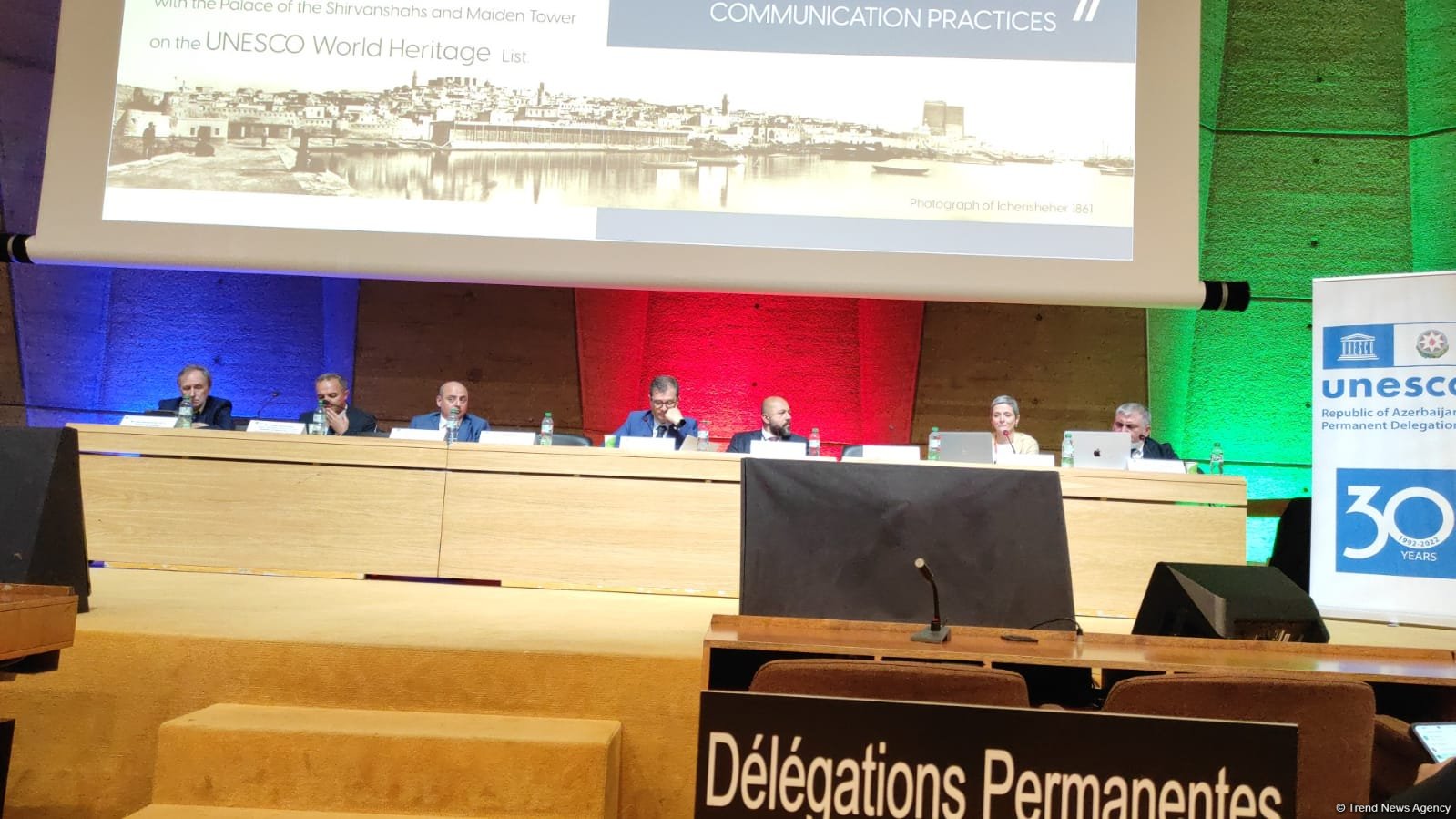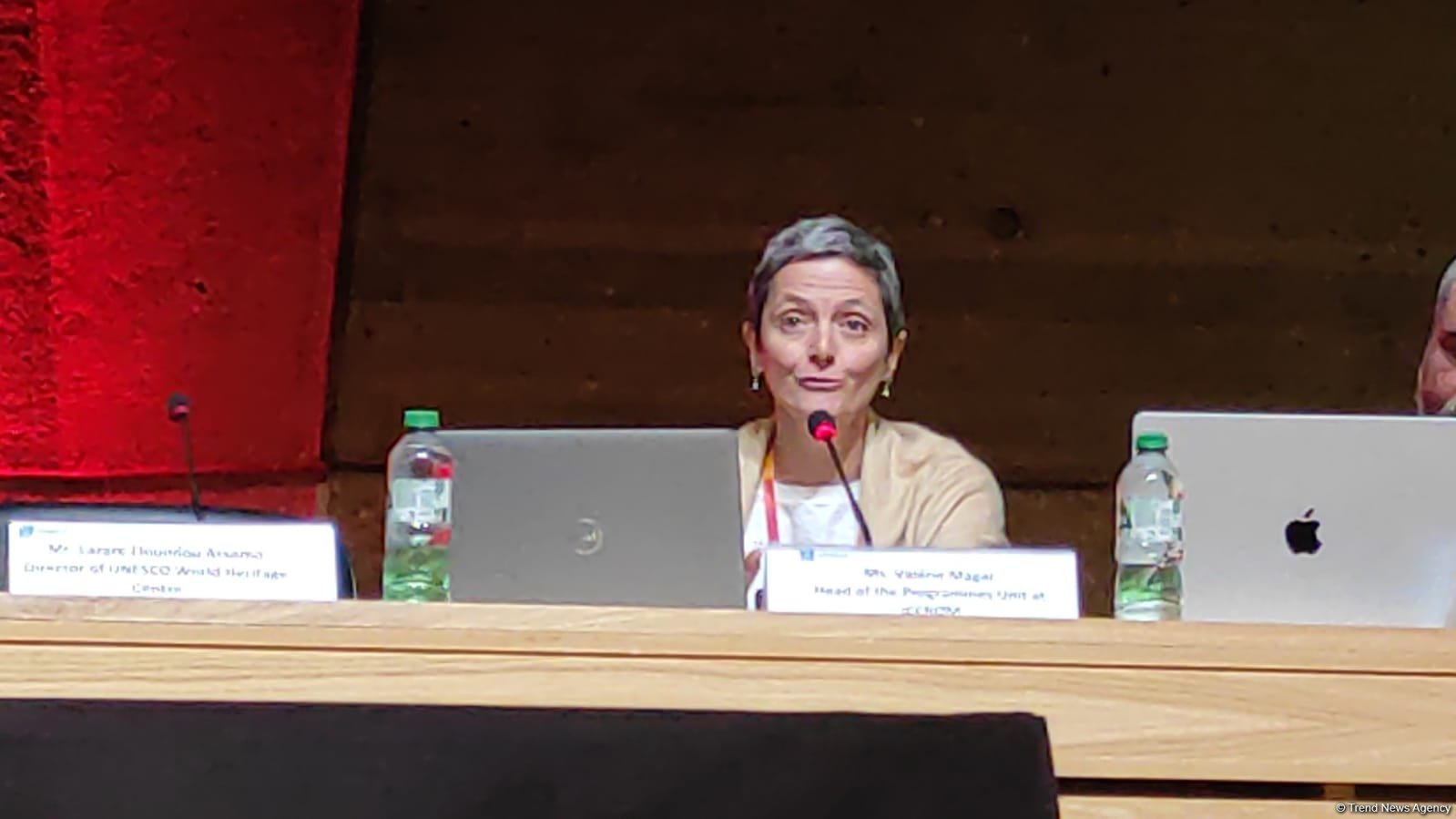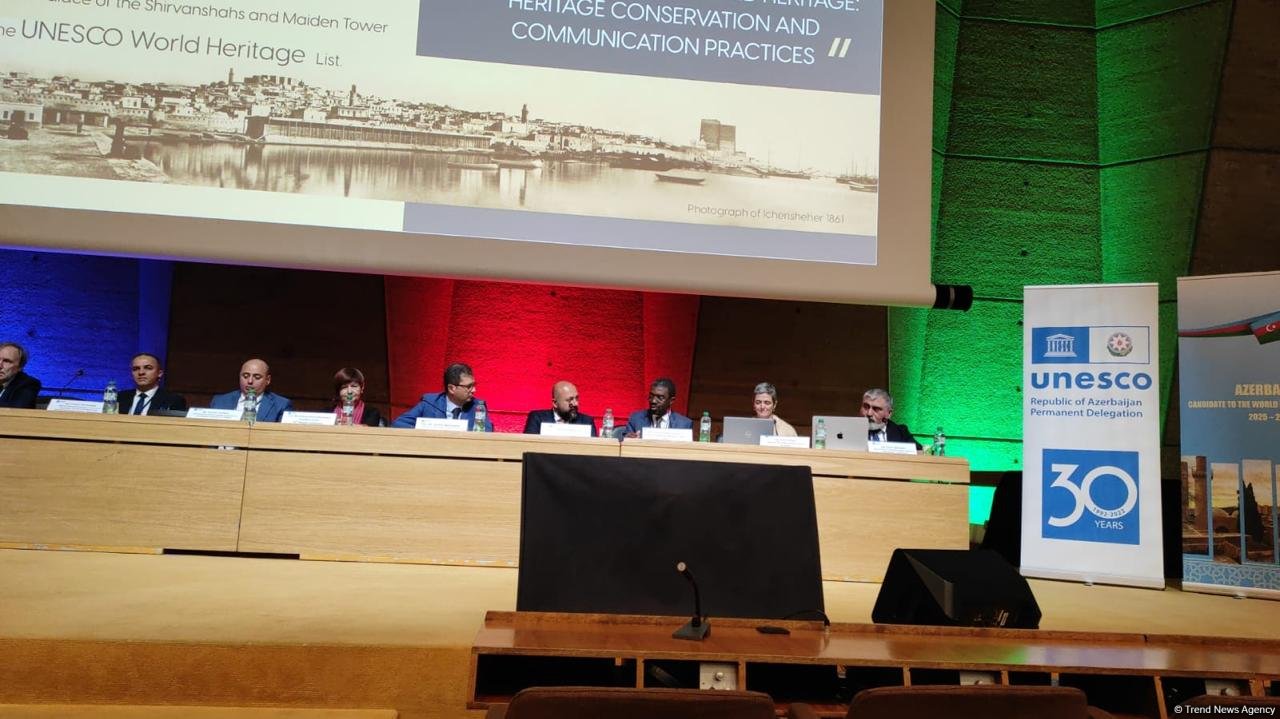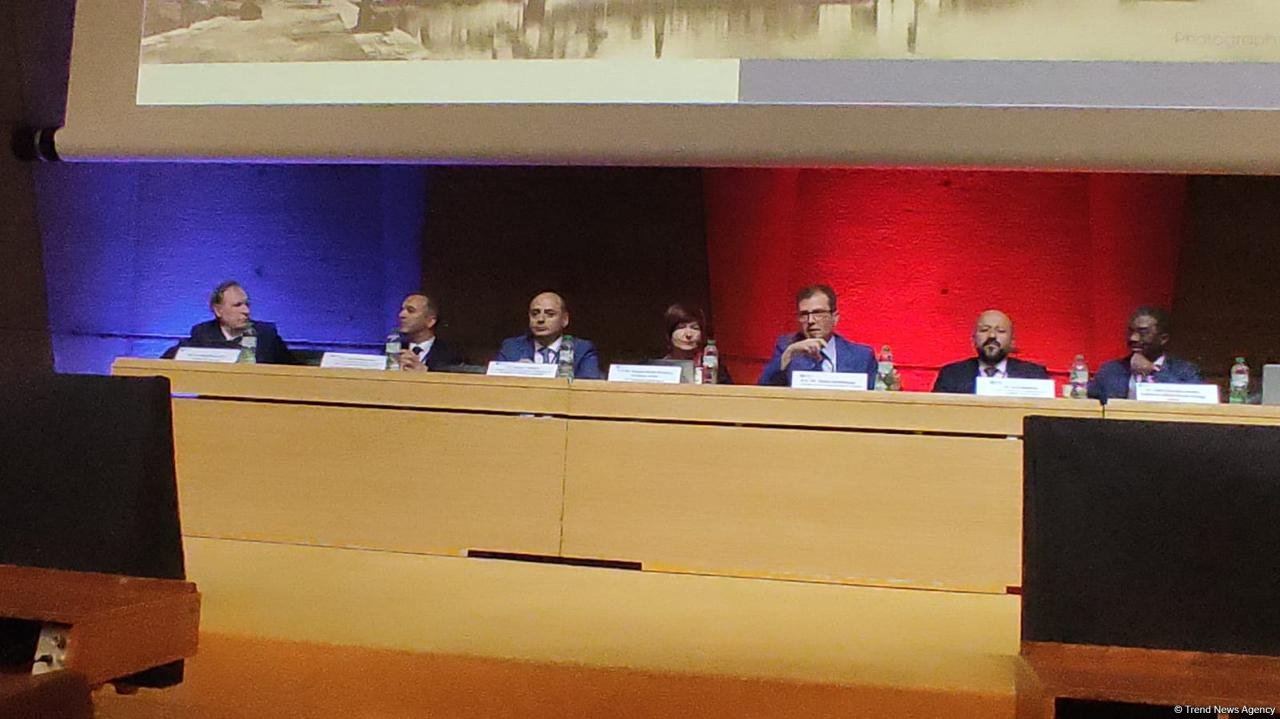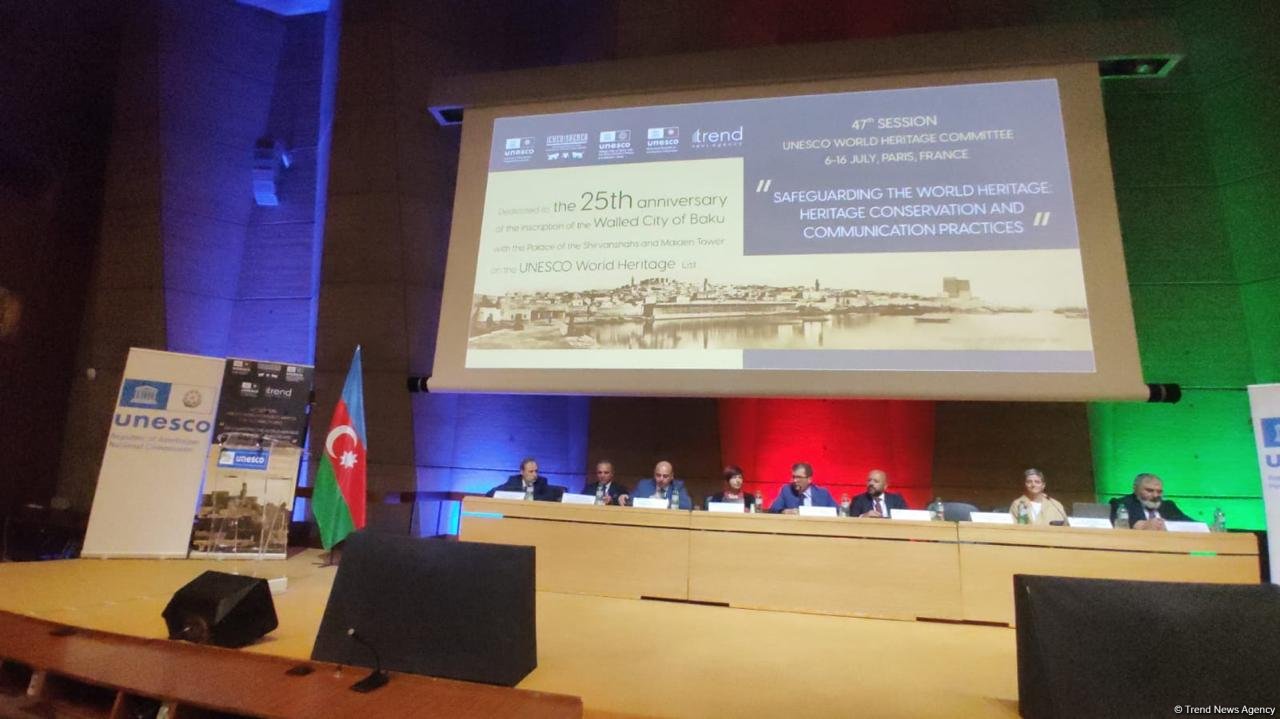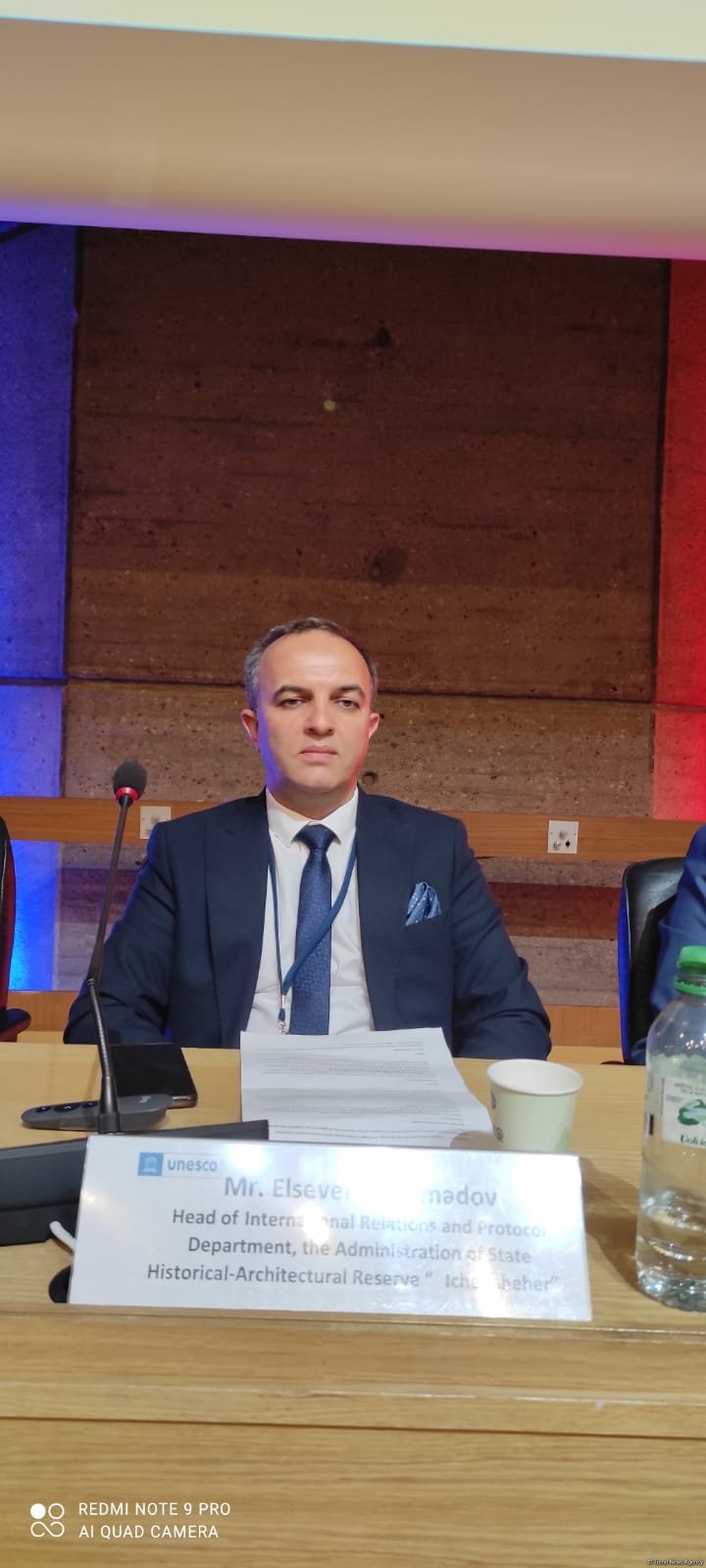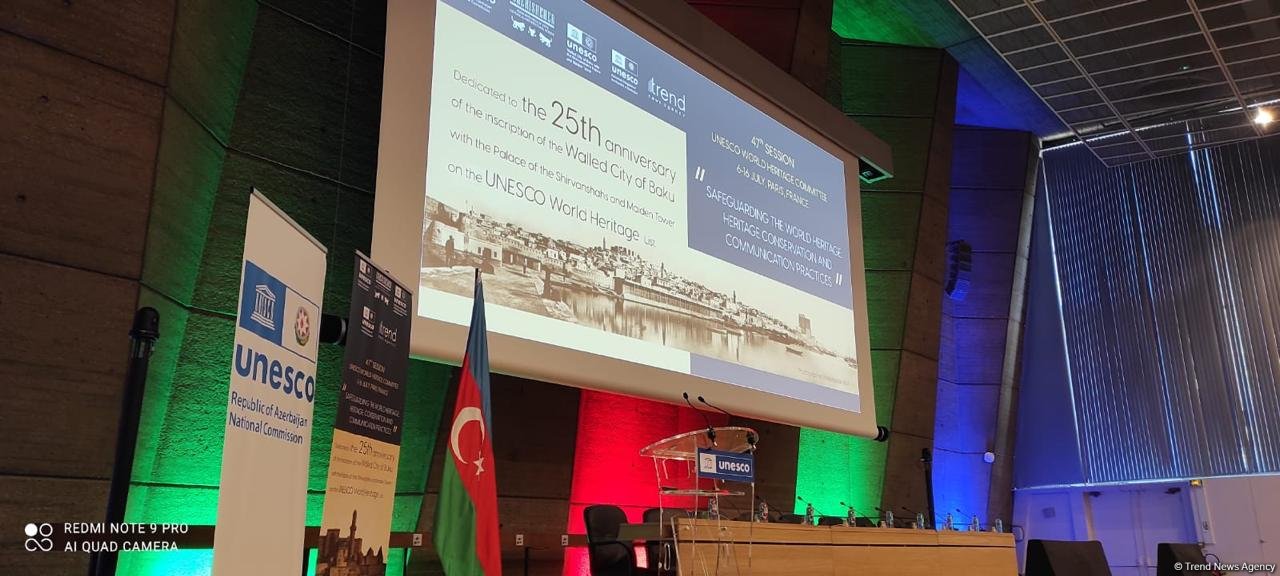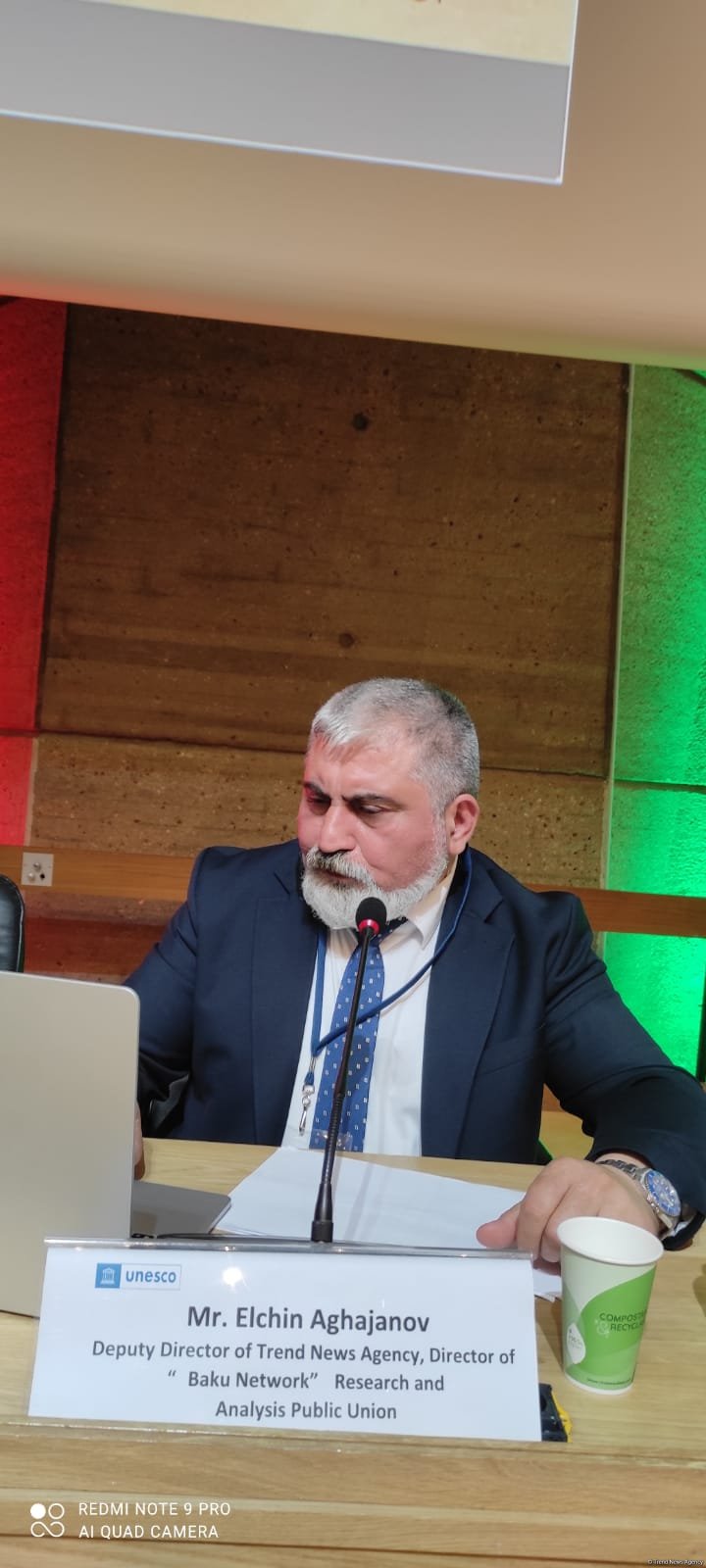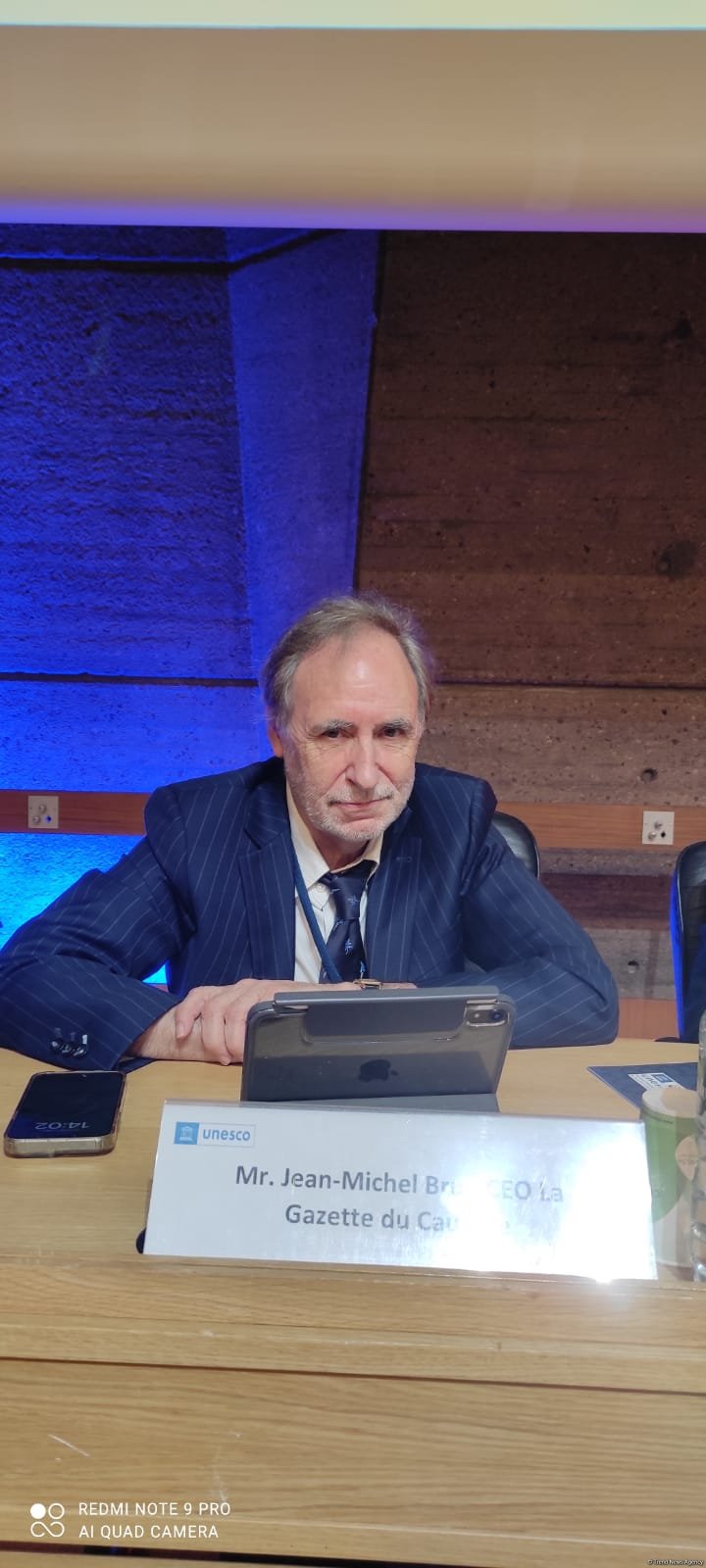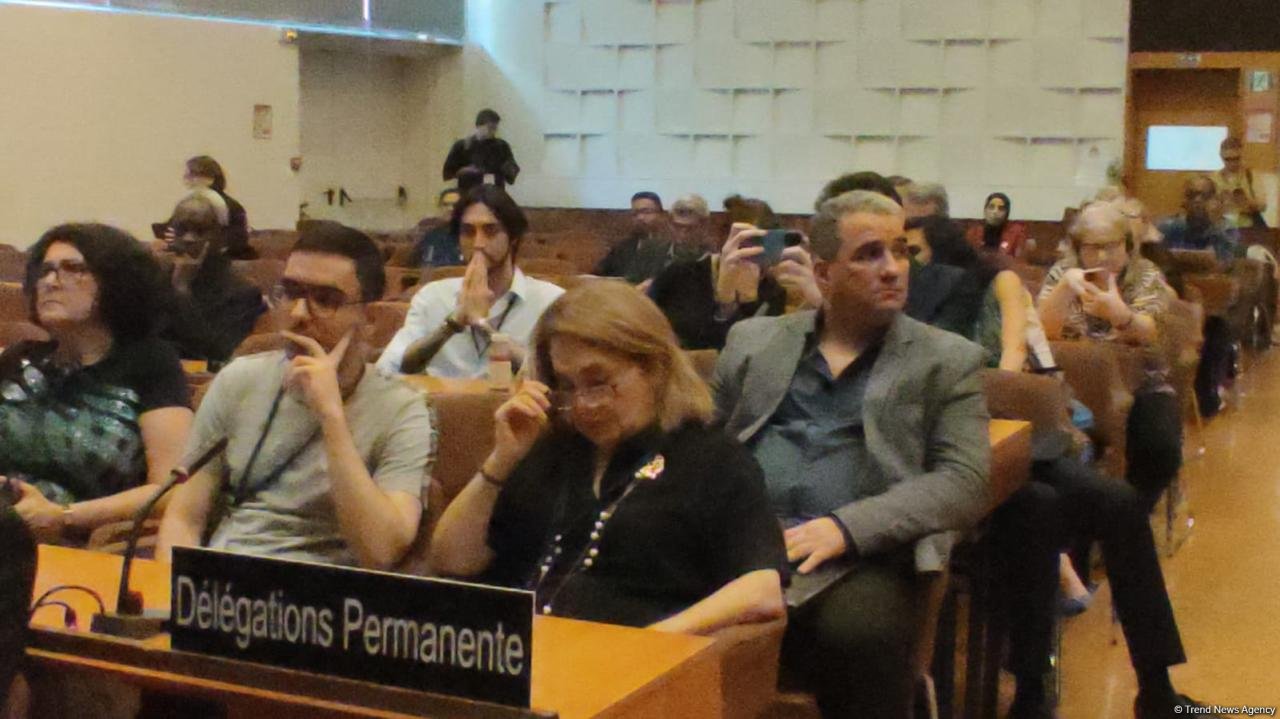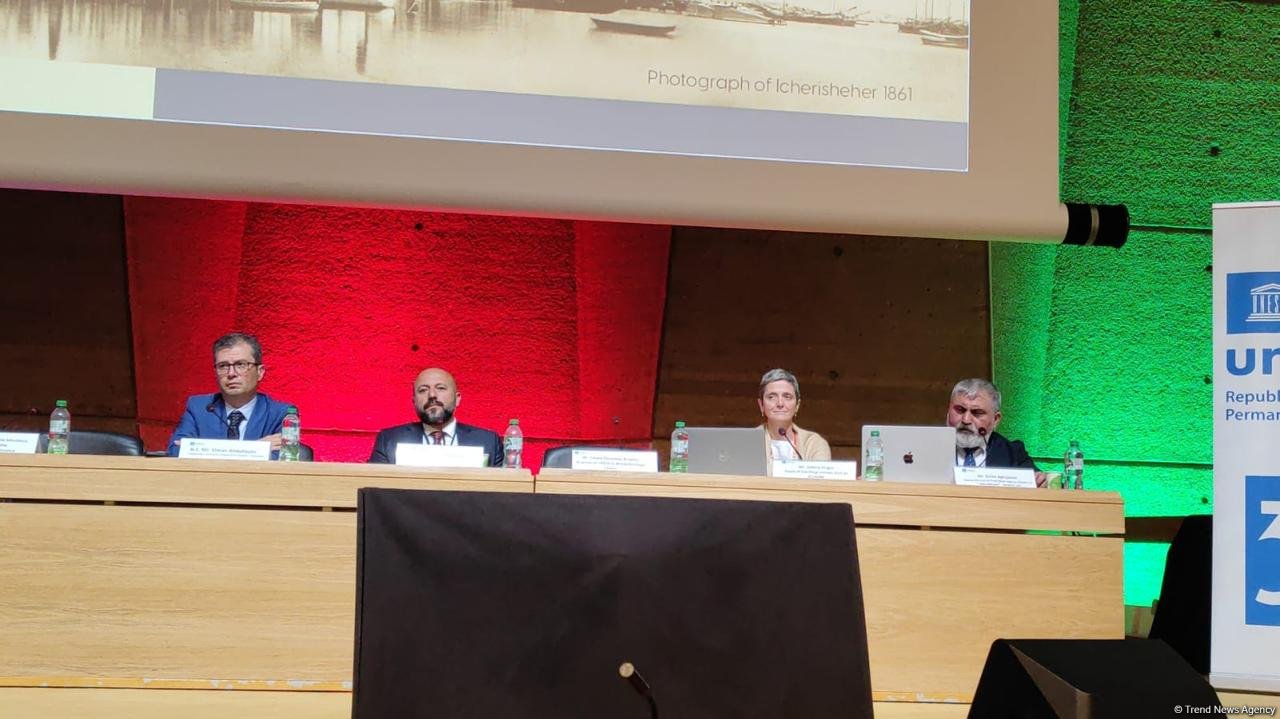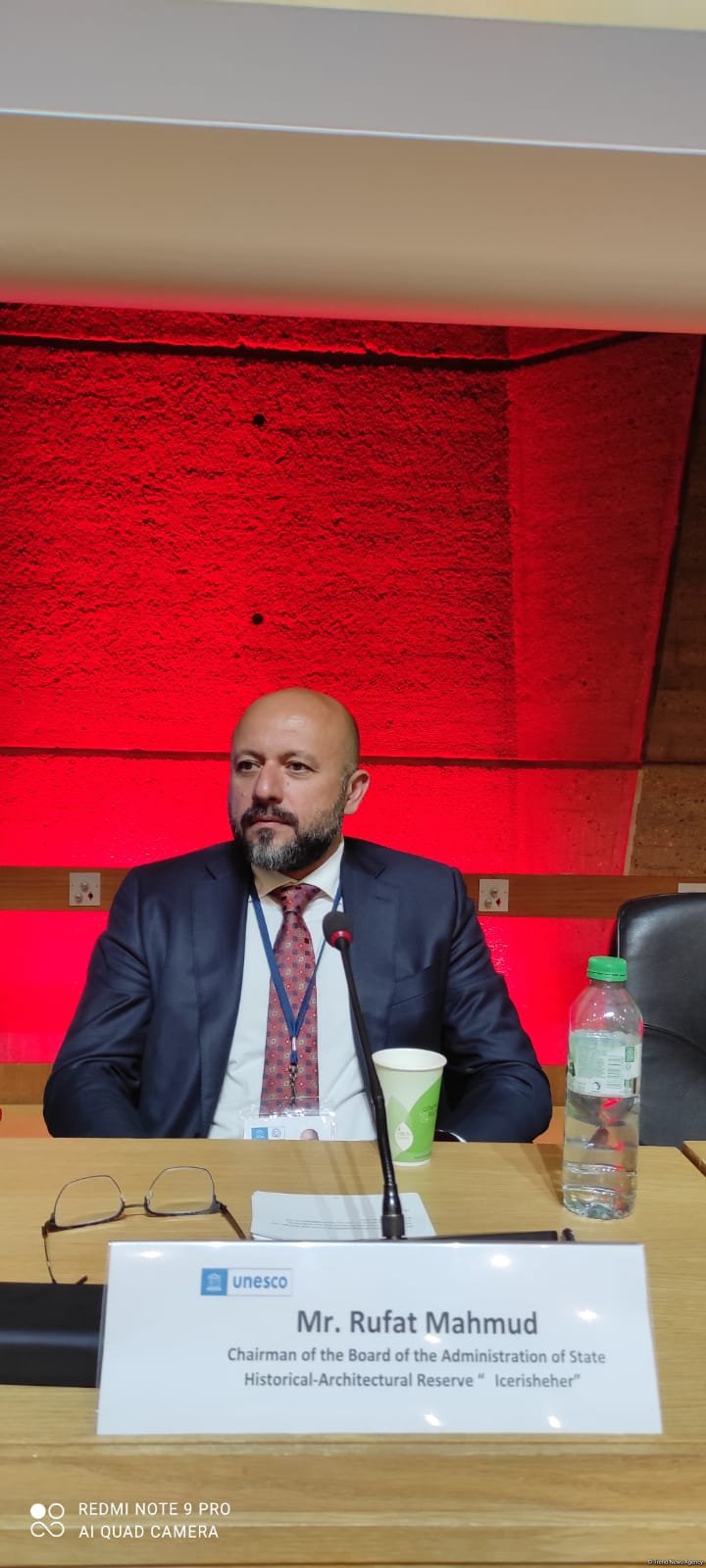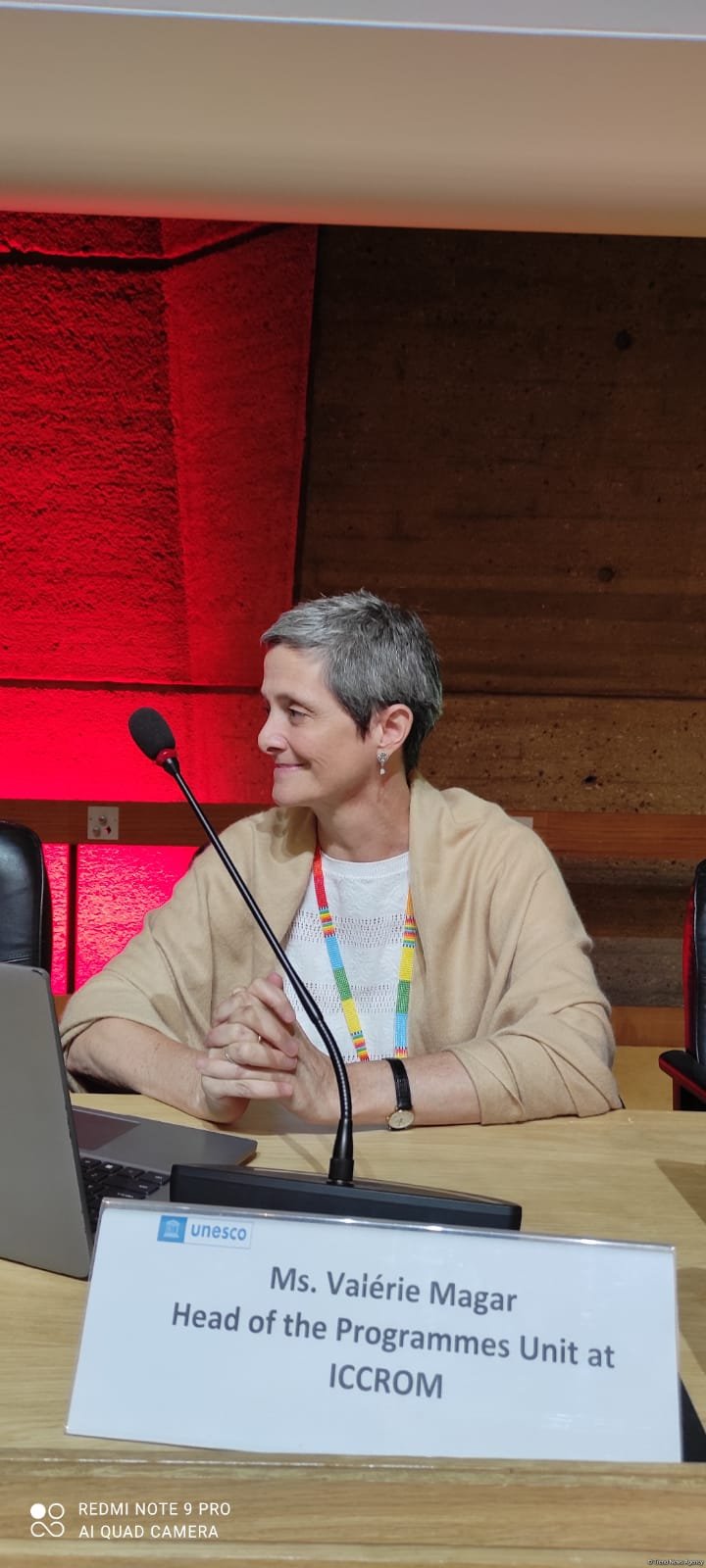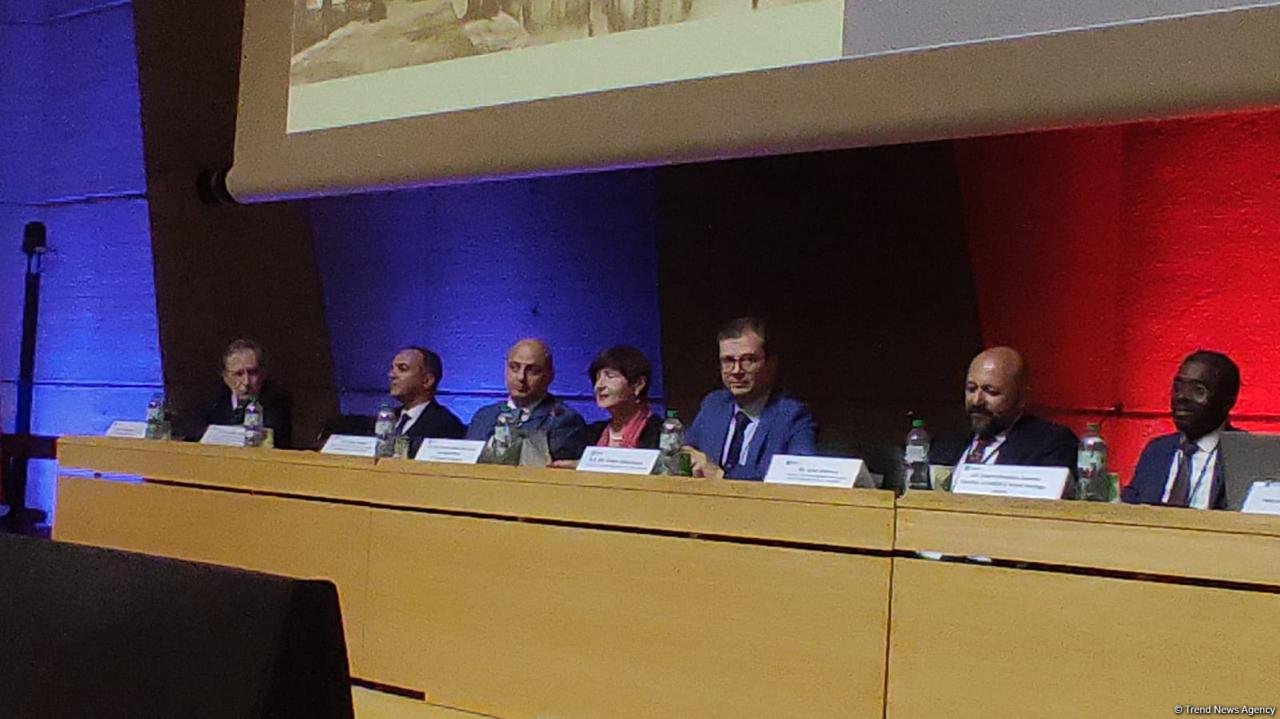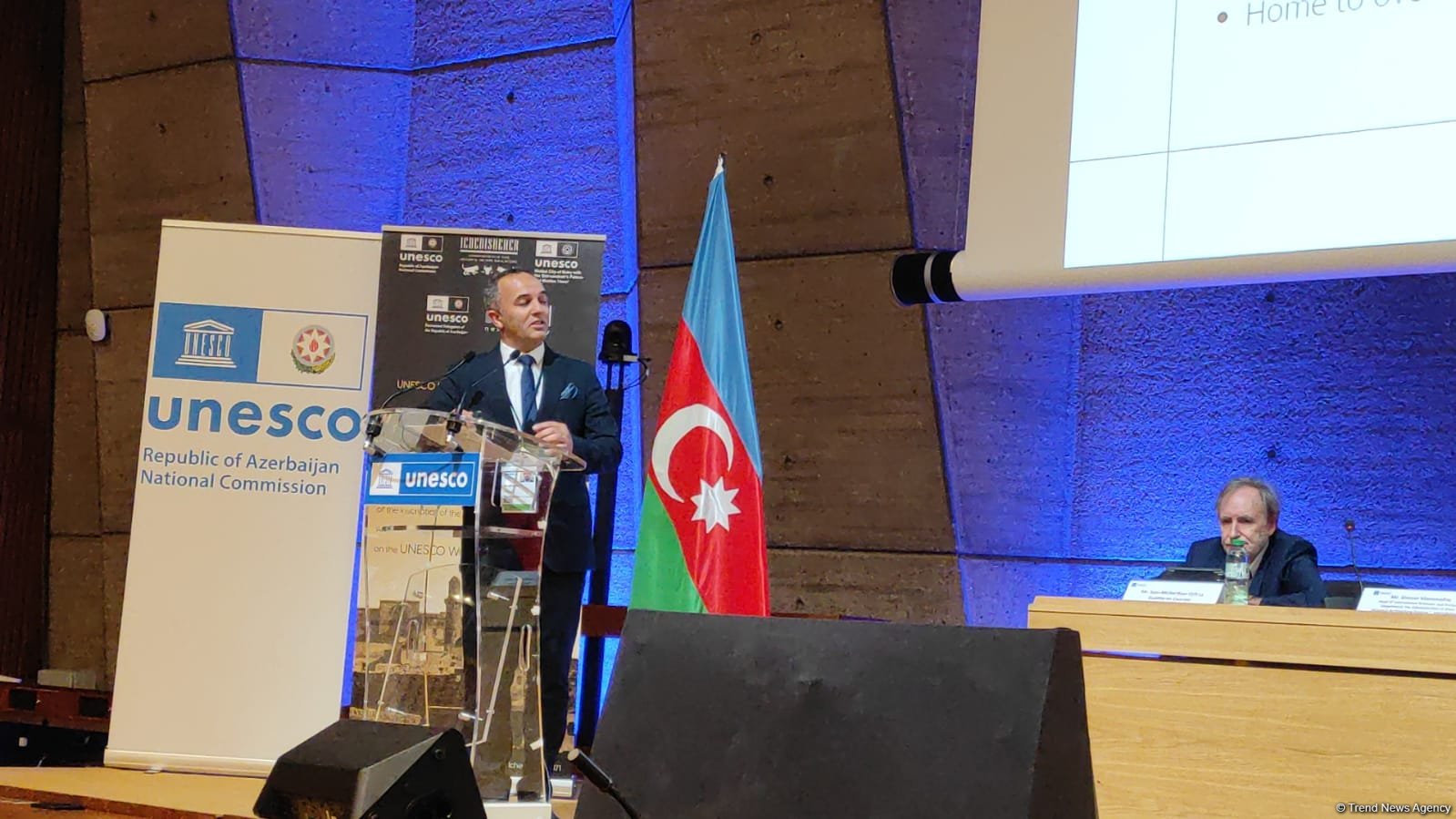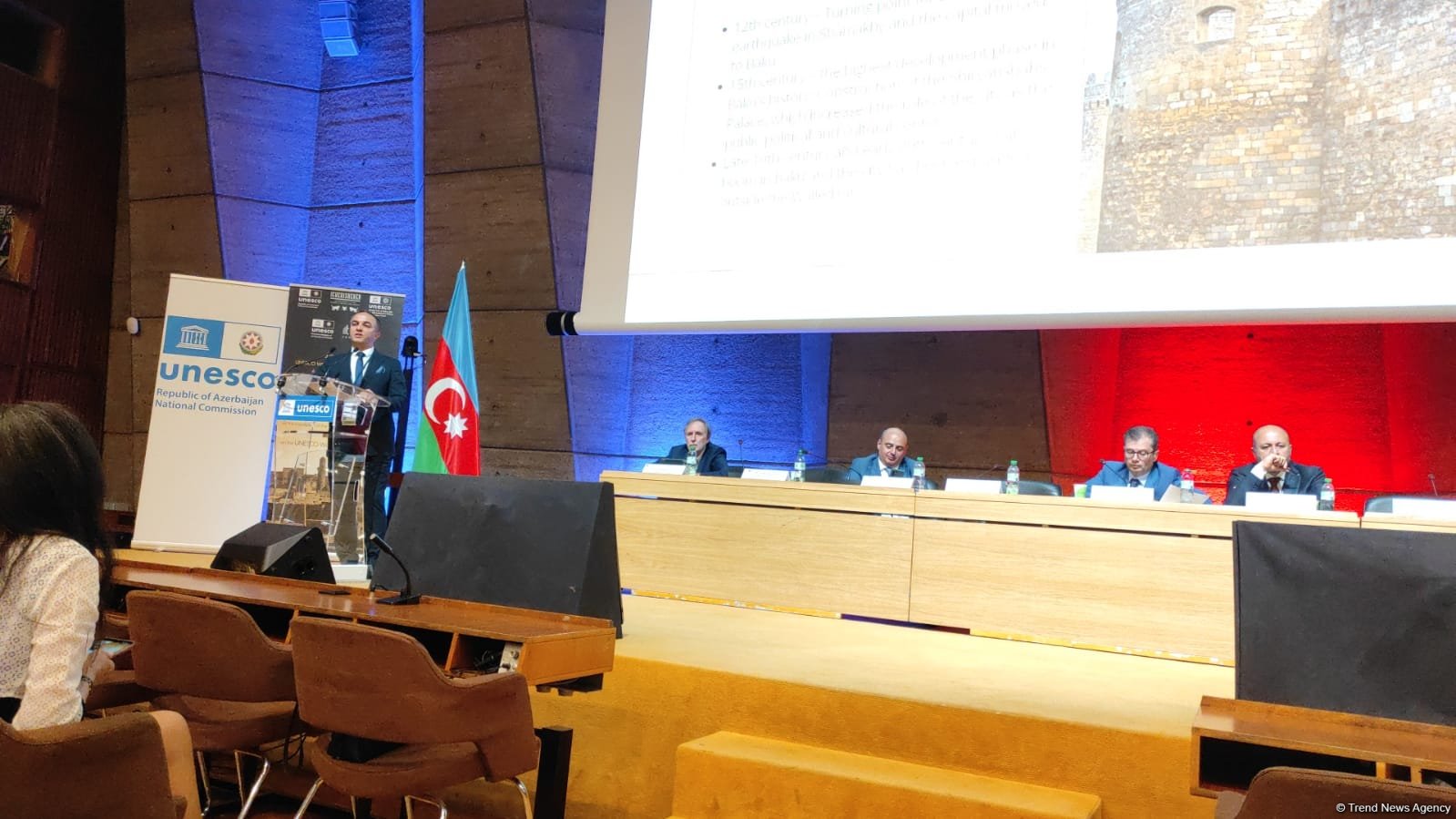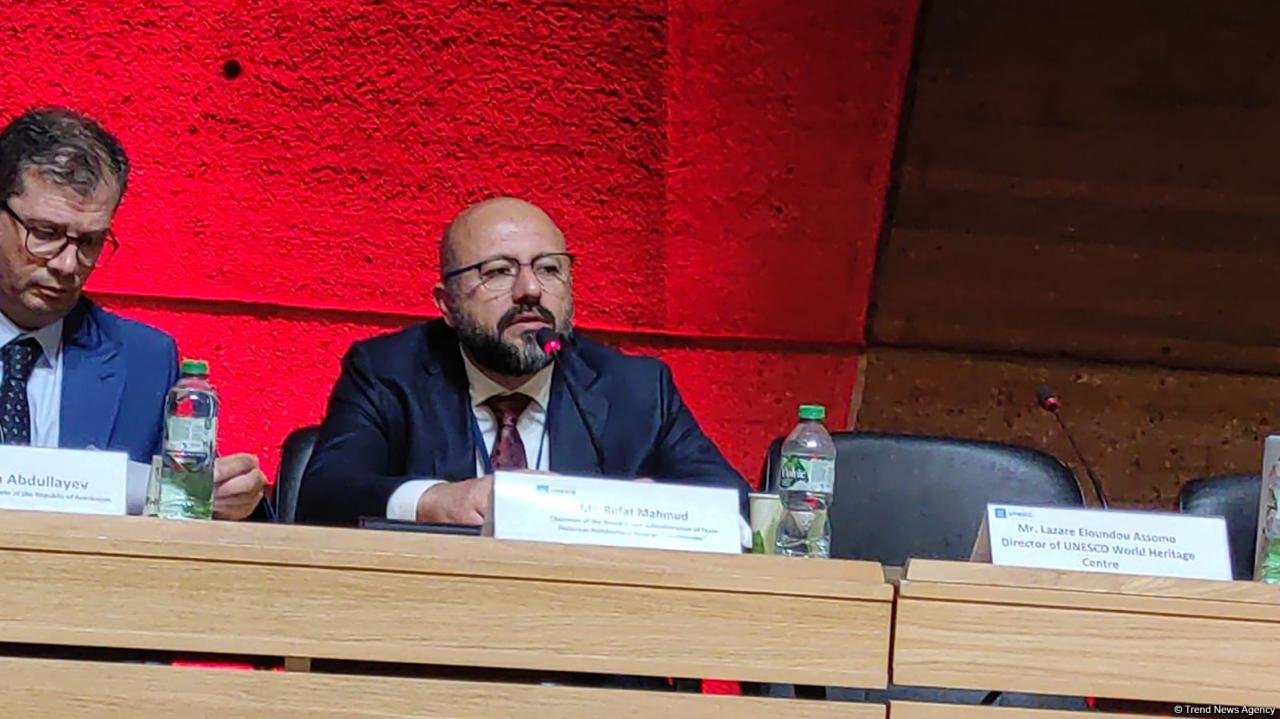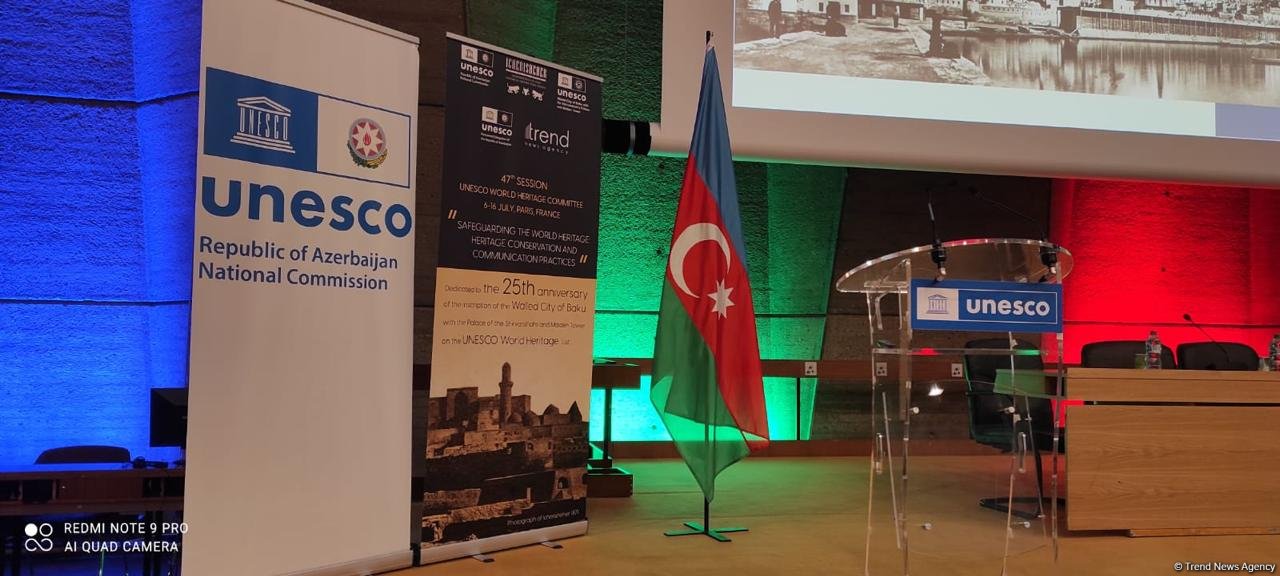PARIS, France, July 14. Thirteen Azerbaijani journalists were killed in Karabakh as a result of Armenian aggression while carrying out their professional responsibilities, said Elchin Aghajanov, Head of the Baku Network think tank, Trend reports.
He made the remarks at a special event marking the 25th anniversary of Icherisheher’s inscription on the UNESCO World Heritage List, held as part of the 47th session of the UNESCO World Heritage Committee.
“These journalists gave their lives in the name of truth, dignity, and the future of their country. Their sacrifice is forever woven into the cultural and historical memory of our nation,” Aghajanov said.
Speaking about Azerbaijan’s broader contribution to cultural preservation, Aghajanov emphasized the country’s rich and diverse heritage, with more than 6,300 monuments under state protection.
“Our country proudly preserves a vast range of heritage sites — from Paleolithic settlements and medieval caravanserais to ancient temples and fortresses. Traces of Zoroastrian, Islamic, Christian, and Jewish civilizations coexist harmoniously on Azerbaijani soil,” he noted.
Aghajanov highlighted that Azerbaijan currently has five sites on the UNESCO World Heritage List: the historic center of Icherisheher, including the Shirvanshah’s Palace and the Maiden Tower; the Gobustan Rock Art Cultural Landscape, home to over 6,000 petroglyphs dating back around 40,000 years; and the Historic Centre of Sheki with the Khan’s Palace, famous for its stained-glass “shebeke” windows assembled without nails.
In addition, 16 Azerbaijani sites are on UNESCO’s Tentative List, including the Khudafarin Bridges, the Ateshgah Fire Temple in Surakhani, and archaeological sites in Nakhchivan. According to official data, more than 600 archaeological sites across Azerbaijan — including in Ganja, Nakhchivan, and Karabakh — are currently under active research.
“In 2024 alone, over 150 cultural heritage sites were officially registered for state protection,” he added.
Aghajanov also underscored the importance of Azerbaijan’s intangible cultural heritage. Mugham (2008), carpet weaving (2010), and the Novruz holiday (2009) have been inscribed on UNESCO’s Representative List of the Intangible Cultural Heritage of Humanity. These traditions, he said, reflect the country’s cultural identity and its commitment to preserving continuity across generations.
“These are not just monuments or customs,” he concluded. “They are living testaments to the shared journey of humanity — and Azerbaijan remains firmly dedicated to their protection and promotion on the global stage.”
As part of the 47th session of the UNESCO World Heritage Committee, held from July 6 to 16, a series of thematic events took place. One of the highlights was a presentation on July 11 commemorating the 25th anniversary of Icherisheher’s inclusion on the UNESCO World Heritage List.
The event was organized by the Administration of the Icherisheher State Historical-Architectural Reserve, with support from Azerbaijan’s National Commission for UNESCO, the Azerbaijani Permanent Delegation to UNESCO, and the international news agency Trend. The theme was “Preserving World Heritage: Conservation and Communication Experience.”
Baku Network coordinated the distribution of brochures honoring Azerbaijani journalists who lost their lives due to Armenian aggression.
The session was moderated by Elman Abdullayev, Azerbaijan’s Permanent Representative to UNESCO.
Discussions focused on international best practices, modern approaches, and communication strategies related to the preservation, restoration, and public presentation of cultural heritage. Participants also learned about the work and achievements of the Icherisheher Reserve Administration in these areas.

